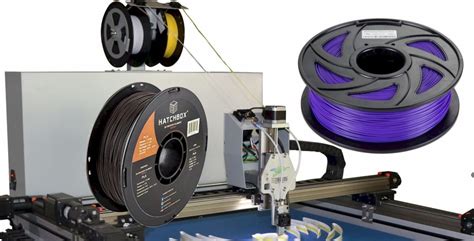How Much Can You Print With 1kg Of Filament
Ronan Farrow
Apr 08, 2025 · 3 min read

Table of Contents
How Much Can You Print With 1kg of Filament?
Knowing how much you can print with 1kg of filament is crucial for planning your 3D printing projects. It directly impacts your material costs and project feasibility. This guide will help you understand the factors that affect filament usage and provide you with estimates to help you better manage your materials.
Factors Affecting Filament Usage
Several factors influence how much you can print with a kilogram of filament:
1. Filament Material:
Different filament materials have different densities. PLA (Polylactic Acid) is generally less dense than ABS (Acrylonitrile Butadiene Styrene), meaning you'll get more print volume from 1kg of PLA compared to 1kg of ABS. Other materials like PETG, TPU, and ASA will also vary in density and therefore print volume.
2. Print Speed:
Slower print speeds generally lead to slightly increased filament usage due to potential oozing and stringing. While the difference might be minimal, faster speeds can be more efficient.
3. Layer Height:
Thicker layers use more filament per layer, resulting in higher overall filament consumption. Thinner layers create more detailed prints but use more filament.
4. Infill Density:
The amount of infill significantly impacts filament usage. A solid infill (100%) will obviously consume more filament than a sparse infill (e.g., 15%). Consider your project's requirements – a solid infill is needed for robust parts, while a low infill is suitable for lightweight objects.
5. Model Design:
Complex models with intricate details and many small features naturally use more filament than simple, smooth models of the same volume. Consider optimizing your 3D models to reduce unnecessary material usage before printing.
6. Nozzle Size:
A larger nozzle will extrude more filament per pass, potentially increasing print speed but also material usage. This factor is intertwined with layer height settings.
Estimating Filament Usage: A Practical Approach
Precise calculations require specialized software, but here's a practical approach to estimation:
- Consider the density: While exact densities vary between brands and batches, a reasonable estimate for PLA is around 1.25 g/cm³ and for ABS around 1.04 g/cm³.
- Calculate the volume: Use your slicer's estimate of the print's volume in cubic centimeters (cm³).
- Convert to grams: Multiply the volume (cm³) by the density (g/cm³) to get an approximate weight in grams.
- Convert to kilograms: Divide the weight in grams by 1000 to get the weight in kilograms.
Example: A model estimated at 200 cm³ using PLA (1.25 g/cm³) would require approximately 250 grams (200 cm³ * 1.25 g/cm³) of filament. This means you could print roughly four such models from a 1kg spool.
Remember that this is an approximation. Actual filament usage might slightly deviate depending on factors listed earlier.
Conclusion
Predicting filament usage accurately requires understanding the interplay between various factors. By considering material type, print settings, and model design, you can improve your estimates and effectively manage your filament supply for successful 3D printing projects. Experimentation and careful observation of your prints are key to refining your estimations over time.
Featured Posts
Also read the following articles
| Article Title | Date |
|---|---|
| How Much Do Isr Instructors Make | Apr 08, 2025 |
| How Much Can A Post Bacc Affect Gpa | Apr 08, 2025 |
| How Much Blood Worms To Feed Betta | Apr 08, 2025 |
| How Much Do People Pay To Get Married For Papers | Apr 08, 2025 |
| How Much Can You Sell Obsidian For | Apr 08, 2025 |
Latest Posts
-
How Much Does A Big Tire Weigh
Apr 08, 2025
-
How Much Does A Bfr Cost
Apr 08, 2025
-
How Much Does A Berta Wedding Gown Cost
Apr 08, 2025
-
How Much Does A Beach Cost
Apr 08, 2025
-
How Much Does A Bbl Cost In Tijuana
Apr 08, 2025
Thank you for visiting our website which covers about How Much Can You Print With 1kg Of Filament . We hope the information provided has been useful to you. Feel free to contact us if you have any questions or need further assistance. See you next time and don't miss to bookmark.
